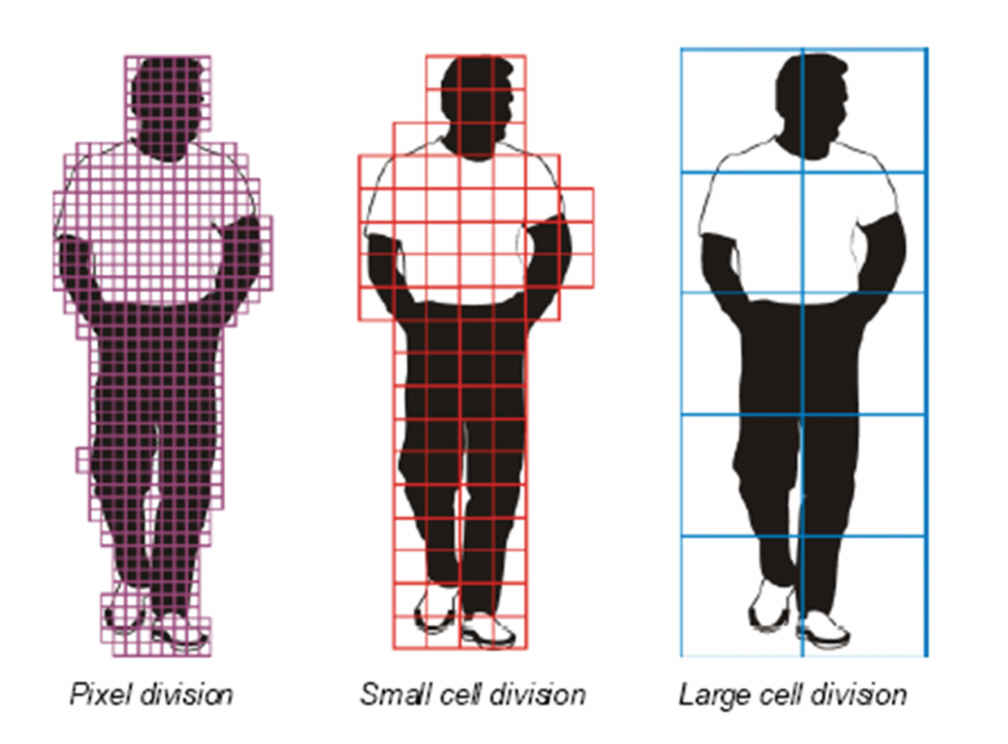VMD (Vidio Motion Detection) is about ¡®volumetric¡¯ detection: whatever a camera sees, it will detect. When VMD was initially introduced, end-users began to experience unacceptable levels of false alarms. The time to install VMD systems -- and particularly the fine-tuning and commissioning -- took too long, and there was an overall impression that the cost simply wasn¡¯t worth the grief that went with it. Nuisance alarms from flying birds or at night from moths flying too close to the cameras were a constant headache. Even cameras mounted on long poles, swaying in the wind would trigger an alarm, but was that the fault of the technology, or was it the fault of poor design and installation?
VMD technologies are now more reliable, and have distinct advantages over other detection technologies in particular applications. Although more sophisticated, in many respects VMDs are more straightforward to comprehend than before, and certainly easier to install. And even if there is an issue, help is never far away. Perhaps now is the time to take another look at VMD with an open mind.
By George Gan
WHAT IS VMD
|

|
|
Photo by Vision Fire & Security |
Video Motion Detection (VMD) for security applications has been available for over 20 years. With recent advances in technology, much more sophisticated VMD systems have become available. They appear under many different names: Video Motion, Video Movement, VMD, Analytics, Intrusion Detection, Perimeter CCTV; but can all be grouped as VMD systems.
Many DVR-type products that claim to have VMD capability only provide a very simple algorithm that is not suited for outdoor applications. A Video Movement Detector (or Video Motion Detector - VMD) is a device used in conjunction with CCTV to generate alarms when activity occurs within the field of view of one or more cameras. Ideally it will generate alarms only when the observed activity is associated with a security threat. The most basic VMD systems (and the first to appear) were analogue devices which monitor the average video level (i.e. brightness) over defined parts of the image. If this level changes by more than a prescribed amount, within a specified time, an alarm is generated. Such systems are still produced and continue to prove their worth in a number of indoor applications.
However, such systems are totally inappropriate for outdoor use. Their detection capabilities are limited at long range and under non-uniform lighting conditions. False alarms are generated by small animals or birds, cloud and tree shadow movements, wind induced camera movement and climactic conditions such as rain and snow. Far more sophisticated image processing is required -- something available through digital signal processing technology.
DIGITAL TECHNOLOGY
Like their analogue predecessors, digital VMD systems also rely on measuring image changes over time within portions of the image. Where they differ is in the method of the detection of image changes and in the processes that distinguish between intruder activity and other activity within the image. There are also techniques of analyzing the video image and learning the scene (known as background modelling), automatic scene learning and environment learning.
The discrimination processes applied depend on the level of sophistication of the VMD and are the primary differentiators in the levels of performance achieved. The processes range from simple event counting techniques to advanced processes that apply background modelling, object identification and tracking techniques to reliably detect intruder movements.
|
THE METHODS OF DIVIDING THE IMAGE INTO DISCRETE PORTIONS |
|

|
|
Figure 1. The method of dividing the image into discrete portions
(Source: Vision Fire & Security) |
THE MEASUREMENT PROCESS
All VMD systems require a measurement process. This process defines the size of the element that will be detected and the way the changes in the element are to be measured. The measurement process defines the size of the element or discrete portions, determines the changes in these elements over time and then uses this information in sophisticated processing routines.
The methods of dividing the image into discrete portions commonly used include:
-
Pixel division - in which the image is divided into very small picture elements (pixels), which may number up to hundreds of thousands
-
Small cell division - in which the image is divided into a few hundreds or thousands of equally or variably sized cells, and
-
Large cell division - in which the image is divided into a few tens or hundreds of variable sized cells.
The pixel division method provides the highest level of detail but it is only with recent advances in signal processing computational capacity that this has become viable. This extra capacity has meant that systems working on larger cell sizes have been superseded.
The method for detecting the changes is just as critical. Outdoor scenes are rarely ideally illuminated and the light intensity varies considerably over the area in which detection is required. This means that an intruder moving in the dark areas of a scene produces a smaller change in local picture brightness than in the better illuminated areas. If the VMD simply looks for a predetermined brightness change to indicate the presence of an intruder, it will either be insensitive to the intruder in the poorly illuminated areas or overly sensitive in the brighter areas.
A better approach is to calculate the contrast changes occurring in the scene and use these to determine whether an intruder is present. For most scenes, the contrast change presented by the intruder is relatively independent of the level of local scene illumination.
In outdoor scenes the conditions may range from well controlled, even illumination, to rapidly varying lighting over part or the entire scene. Where the scene illumination is constantly changing, the simpler VMD systems will generate sporadic alarms from different portions of the image. The most sophisticated systems adapt the sensitivity according to the overall image activity, in order to maintain the best possible detection probability without creating false alarms.
IMAGE MODELLING PROCESS
The latest generation of VMD products employs sophisticated learning techniques to optimize the performance for a wide range of sites, without requiring skilled set up. These are also described as background modelling, automated image learning or image modelling. The learning process is continuous enabling the system to adapt to changing environments, for a better detection probability to false alarm performance ratio. These new learning schema correlate detected ¡®movements¡¯ with the learned scene structure. By this means, the detector can distinguish more reliably between non-intrusion activity (such as camera movements, wobbling objects or shadows), and real scene intrusion targets.
TARGET IDENTIFICATION AND ALARM GENERATION
The next phase is to extract the possible targets from the scene and then perform some classification on the targets to determine whether an alarm should be generated. The pixels in the scene that are different to that expected from the background and models are extracted using contrast methods as discussed earlier. These pixels can then be grouped together (clustered) to produce contiguous objects which can then move to the classification stage to determine whether they constitute a valid target.
Once the target has been extracted from the scene, further criteria are applied to determine if the target should generate an alarm.
These criteria can include:
. Size of the target
. Speed of the target
. Distance the target has moved in the image
. Time the target has been observed
These criteria, often bundled together as target tracking, coupled with image modelling and scene learning techniques, can dramatically reduce the false alarm levels caused by small animals and wind blown debris which afflict the simpler systems. Using size is also critical for perspective scaling: intruders close to the camera will appear much larger than those further away. By using pixel based processing, VMD systems can provide good size discrimination accuracy.
SYSTEM REQUIREMENTS
For a Video Movement Detector to be considered a valid security sensor it must incorporate methods of detecting internal failure or attempts to disable it. Potential methods of sabotage include masking of the camera, blinding of the camera with a high intensity light and cutting the cable from the camera.
Continuous monitoring of the video signals received from the camera makes it is possible for the VMD system to alert the guard if the camera fails, the scene illumination fails, an intruder tries to dazzle or mask the camera or if the scene contrast is too low for reliable detection. System malfunctions can also be detected by continuous self-testing and power supply monitoring contained within the system.
USING DUAL SENSORS
VMD, however, like other sensor technologies is capable of generating a nuisance alarm for non-human intrusions into the scene that resemble human like activity to the signal processor. Security systems should, where possible, use more than one sensor technology to give better control of the detection to nuisance alarm ratio to match site requirements.
ELIMINATE NUISANCE ALARMS
A solution to almost totally eliminate nuisance alarms with VMD is to exploit the fact that humans radiate body heat or infra-red energy. Passive Infra-Red (PIR) detectors can be used in conjunction with VMD detection for increased system performance. These sensors have been used extensively indoors for many years and recent technology has produced detectors that operate reliably and effectively outdoors, at a competitive price. They may be positioned to place a very narrow infra-red reception curtain along the perimeter, within the camera field of view, and employ optical filtering to obtain maximum sensitivity around the wave-length of human infra-red radiation.
PASSIVE INFRA-RED DETECTION
The outdoor Passive Infra-Red detector complements VMD very well, as it is looking for body heat, while the VMD is looking for human like activity in the cameras image. In a low threat situation the two sensing systems can be interconnected in such a way that false or nuisance alarms can be virtually eliminated while maintaining a very high probability of human detection. In this configuration, both detection technologies must activate to trigger an alarm. If the threat situation becomes high, the two sensor technologies can be interconnected so that either the detection of body heat or human like activity in the image causes an alarm.
CONVENIENT AND COST EFFECTIVE
The combination of these two sensor technologies also offers cost advantages for installation. The PIR detector is a passive device and only requires a single point of installation. This point is the same as the camera, either in the same housing or on the same pole. This single point installation not only offers complementary dual sensor technology to the perimeter system but also automatically provides CCTV for alarm qualification. A further advantage is that the two methods require very similar site considerations.
In any security application, the key element is to understand the problems to be addressed, and then determine a suitable solution. VMD can form an integral part of a security system, particularly in a perimeter protection scenario. With good system design, rigorous installation, commissioning and maintenance, VMD is an extremely viable solution in many applications.
George Gan is a marketing manager of Vision Fire & Security (www.vision-fs.com).
For more information, please send your e-mails to swm@infothe.com.
¨Ï2007 www.SecurityWorldMag.com. All rights reserved.



